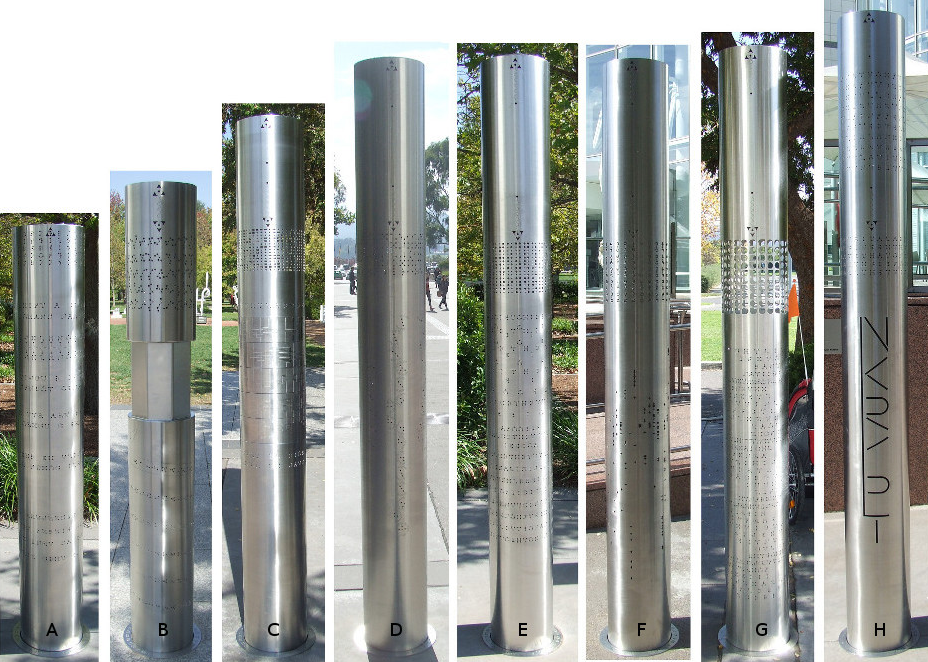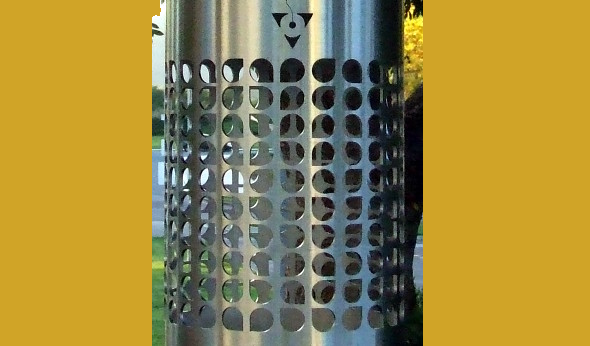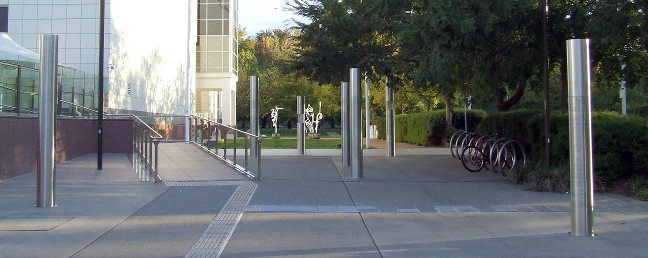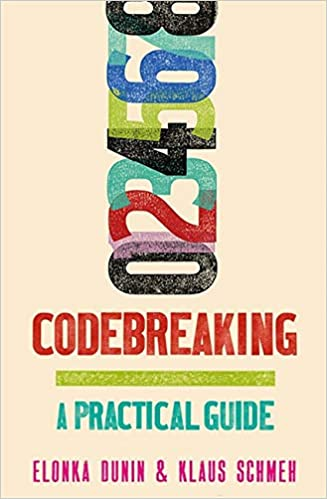NKRYPT, located in Canberra Australia, is a set of eight steel pillars that bear encrypted inscriptions. Today, I’m going to introduce one of these: the squircle cryptogram.
Last Sunday, I blogged about NKRYPT, an installation outside the Questacon science and technology centre in Canberra, Australia. NKRYPT was designed by artist Stuart Kohlhagen and installed in March 2013.
NKRYPT
NKRYPT consists of eight stainless steel pillars, labelled from A to H, each covered with several encrypted messages. The following collage gives an overview:

Source: Glenn McIntosh
Contrary to Kryptos and the Cheltenham Listening Stones, which follow a similar concept, NKRYPT has not received much attention in the codebreaking community yet.
NKRYPT is described on the Questacon website and on two fan pages. The latter one is operated by Glenn McIntosh.
♦♦♦♦♦♦♦♦♦ Coming November 2020 ♦♦♦♦♦♦♦♦♦♦♦♦♦
This is the book of my dreams: A super-clear, super-fun guide for solving secret messages of all kinds, from paper-and-pencil cryptograms to Enigma machines. With deep knowledge and skillful storytelling, Dunin and Schmeh capture the joy and power of codebreaking.
Jason Fagone, , author of the bestselling “The Woman Who Smashed Codes”
♦♦♦♦♦♦♦♦♦♦♦♦♦♦♦♦♦♦♦♦♦♦♦♦♦♦♦♦♦♦♦♦♦♦♦♦♦♦
The squircle cryptogram
Today, I want to focus on an NKRYPT message that is, according to Glenn McIntosh, particularly interesting. This cryptogram is inscribed on the upper part of pillar G. It doesn’t have an official name, so Glenn calls it the “squircle cryptogram“. A squircle is a shape intermediate between a square and a circle.
As can be seen, the alphabet used here contains only four letters (i.e. squircles). Glenn transcribed these with the numbers from 0 to 3, which resulted in the following 26×10 grid:
01110011011101021231331012 02030013322303333000200032 21221133103032320102000132 23123002121223001301131123 10103100010101201201221103 30212131033000203011112330 30101111212032132012210133 13303323023120222333322012 00000101022001203231310031 30110333202120112302112123
Glenn thinks that the squircles are grouped in vertical pairs, which transfers the cryptogram into a 26×5 grid. If this is assumption is correct, there might be a connection between the squircle cryptogram and the two messages on the H pillar (one of these is unsolved).
Considering that there are 26 columns, there is another obvious option: Each column stands for a letter of the alphabet, while every line somehow determines a column. If this is the case, the plaintext might be a ten-letter word.
According to the other NKRYPT website, NKRYPT creator Stuart Kohlhagen said about the squircle cryptogram: “Stuart K writes “Squircles was one of the few of the labyrinth codes that was developed with a bit of encryption strategy.”
If this quote rings a bell or if you have other interesting information about this cryptogram to share, please let me know.
Follow @KlausSchmeh
Further reading: $10,000 worth of crypto-currencies hidden in Lego artworks
Linkedin: https://www.linkedin.com/groups/13501820
Facebook: https://www.facebook.com/groups/763282653806483/







Kommentare (2)